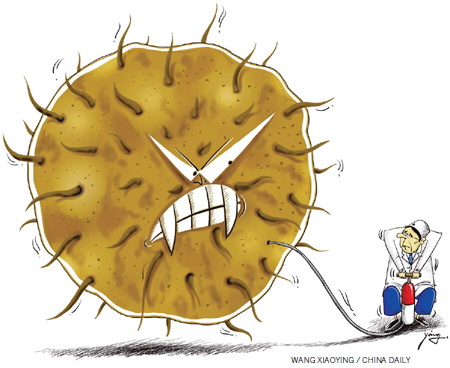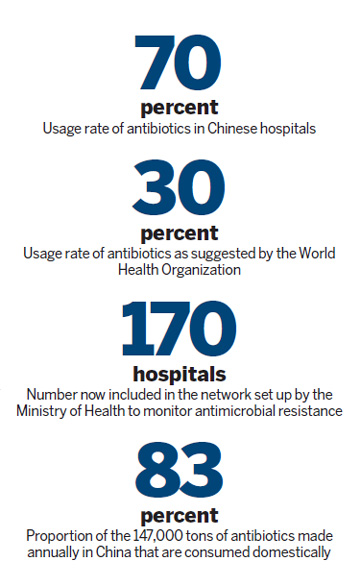Focus
Addicted to antibiotics
By Li Li (China Daily)
Updated: 2010-11-09 07:46
 |
Large Medium Small |
Capping the bottle
Aware of the growing problem with antimicrobial resistance, the Ministry of Health in 2005 began constructing a monitoring network for Chinese hospitals. More than 170 first-class facilities are now included in the system, which was credited with finding the three NDM-1 superbug cases reported on the Chinese mainland last month.
Some hospitals have also taken the initiative and tightened controls on the use of antibiotics by staff.
"We carry out 500 spot checks on medicine prescriptions every month," said Xu Qian, chief physician with China-Japan Friendship Hospital's infectious diseases unit. "If any inappropriate use is found, the related doctor's bonus is downgraded."
The move has helped reduce antibiotic use from more than 70 percent to between 50 and 60 percent, said Xu, who added that "a monitoring system for the use of drugs, especially antibiotics, is now being built".
To cut down on the abuse of antibiotics in small hospitals and village clinics in Guangdong, the pharmacology association under the Adverse Drug Reaction Monitoring Center is organizing training programs led by experienced doctors.
However, the efforts of just a few hospitals and social organizations are far from enough to solve the problem, said Xiao Yonghong, chief physician of the No 1 Hospital affiliated to Zhejiang University.
"First of all, the government needs to draft a law on antibiotic use," he said, warning about legal loopholes. "Second, hospitals need to cut the influence producers have on doctors in choosing medicines."
Xiao, who is also a professor at the State Key Laboratory for Diagnosis and Treatment of Infectious Diseases, explained that Chinese doctors have too many brands to choose from, especially when it comes to antibiotics, and he fears their decisions are often affected by representatives from drugs companies.
"I don't understand why the State Food and Drug Administration need to give hundreds of production licenses to the same drug," he said.
China began producing antibiotics about 60 years ago, although choice was extremely limited until the 1990s, leaving hospitals to depend on imported drugs.
Today, China is the world's largest producer of antibiotics, boasting 181 brands, according to figures released at the Chinese Summit on Antibiotics in 2009. More than 83 percent of the 147,000 tons of antibiotics made annually in China are consumed domestically.
Ironically, the antibiotics that once helped defend people against bacteria is now making it harder to kill.
"It's hard to imagine what will happen if antimicrobial resistance gets overwhelmingly high," said Xu at China-Japan Friendship Hospital. "It would be like going back to the days before antibiotics."

